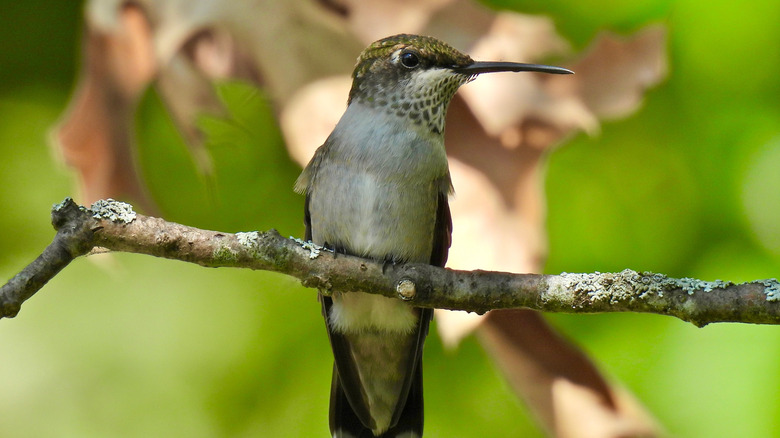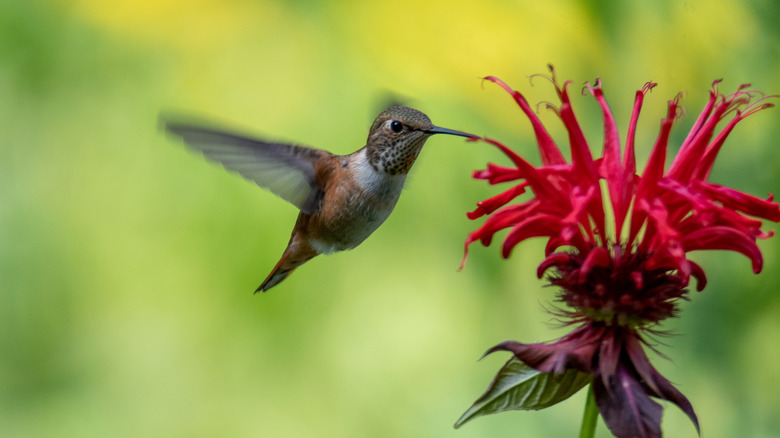One Of The Top Flowers To Plant For Luring Hummingbirds Into Your Garden
Although hummingbirds may love drinking sugar water from feeders near the windows of our homes, nectar-rich flowers are even better for them. So, if you want to attract these winged daredevils to your yard or garden, a well-curated plant selection will encourage them to keep coming back. One of their favorite plants to forage from is bee balm (Monarda spp.), a group of plants in the mint family related to spearmint and basil. There are 25 species of bee balm native to North America but not all of them do an equal job at luring in these small birds.
Some bee balms are pollinated by long-tongued bees rather than hummingbirds, so it's important to choose the right type. The flowers of scarlet bee balm (Monarda didyma) have no fragrant scent, yet these perennial plants are particularly attractive to hummers. In particular, ruby throated hummingbirds, one of the different types of hummingbirds you might find in your backyard or garden, love these blooms.
Why hummingbirds love bee balm
While their edible, globe-shaped blooms and well-controlled spread make these plants great assets in the well-designed home landscape, hummingbirds for their part are drawn to the red hue of scarlet bee balm. Attracted to bright colors because of the anatomy of their eyes, these birds see the color red and interpret the color as a flashing "all you can eat" buffet sign.
Color isn't the only thing that attracts hummingbirds to bee balm though. Like many of the flowers that will transform your space into a hummingbird heaven, bee balm flower heads are made up of tubular blooms — perfect for the long beaks and tongues of these petite flyers. While scarlet bee balm is the perfect flower to attract these tiny birds if you live in the northeastern US or the Appalachian mountains, for those in the arid western US, a more suitable choice is scarlet gilia, a unique flower that attracts hummingbirds with its color-changing blooms.

